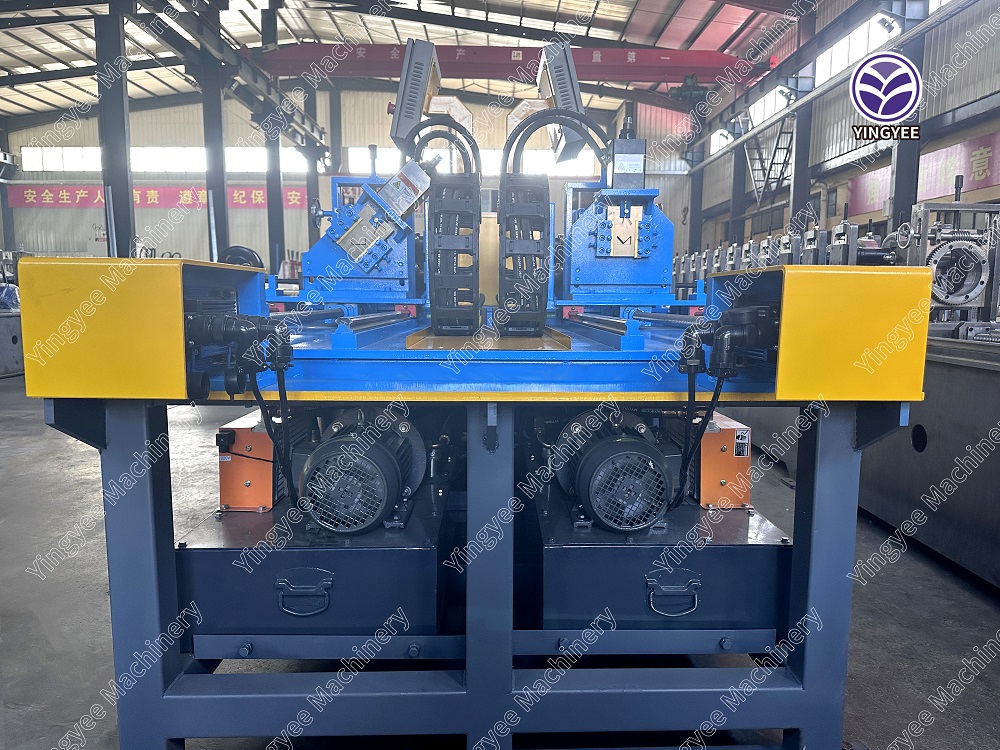
Metal Roofing Sheet Making Machine Revolutionizing the Construction Industry
In recent years, the construction industry has witnessed significant transformations driven by advancements in technology and manufacturing processes. One notable innovation that has gained traction is the metal roofing sheet making machine. This state-of-the-art equipment not only streamlines the production of metal roofing sheets but also enhances efficiency, durability, and aesthetic appeal in construction projects.
Understanding Metal Roofing Sheets
Metal roofing sheets are increasingly becoming the material of choice for both residential and commercial buildings due to their numerous advantages. They are lightweight, long-lasting, and resistant to extreme weather conditions, making them a practical alternative to traditional roofing materials like asphalt shingles or clay tiles. These sheets come in various metals, including aluminum, steel, copper, and zinc, allowing for a range of applications and finishes to suit various architectural styles.
The Role of Metal Roofing Sheet Making Machines
The metal roofing sheet making machine plays a pivotal role in the manufacturing process of these roofing sheets. These machines are designed to efficiently produce metal sheets in various sizes, styles, and profiles. Typically, they work through a continuous roll-forming process, where metal coils are fed into the machine and transformed into desired sheet shapes.
Key Components of Metal Roofing Sheet Making Machines
1. Roll Forming System This is the heart of the machine, consisting of several rollers that shape the metal into the required profile. The precision of the roller alignment and configuration is crucial in achieving consistent quality.
2. Cutting Mechanism Once the sheet is formed, it needs to be cut to the specified lengths. Advanced machines utilize hydraulic or electric cutting mechanisms, ensuring clean and precise cuts for a professional finish.
3. Control Panel Modern machines come equipped with sophisticated control systems, allowing operators to set parameters like thickness, length, and speed easily. Some advanced models even incorporate automation features for enhanced efficiency.

4. Material Handling System To optimize the manufacturing process, machines often include mechanisms for feeding and stacking sheets, minimizing manual labor and reducing the risk of damage to the sheets.
Advantages of Using Metal Roofing Sheet Making Machines
1. Efficiency and Speed These machines significantly reduce the time required to produce metal roofing sheets compared to traditional methods. High-capacity models can produce thousands of square meters of roofing material within a short time frame.
2. Cost-Effectiveness Automating the production process leads to lower labor costs and less material wastage. As a result, companies can offer competitive prices while maintaining healthy margins.
3. Consistent Quality With precision engineering, metal roofing sheet making machines ensure uniformity in both thickness and dimensions, resulting in high-quality products that meet industry standards.
4. Versatility These machines can produce a variety of sheet profiles and sizes, catering to diverse project requirements. Whether it's standing seam, corrugated, or tile-like profiles, manufacturers can easily adapt to changing market demands.
5. Durability Metal roofing sheets are inherently long-lasting, and the machines’ quality control ensures that only the best materials and processes are used in production.
Conclusion
The emergence of metal roofing sheet making machines represents a significant leap forward in the construction and manufacturing sectors. As the demand for sustainable and resilient building materials continues to rise, metal roofing sheets produced by these advanced machines stand out for their efficiency, durability, and aesthetic flexibility. By adopting this technology, manufacturers can not only enhance their productivity and profitability but also contribute to building a more resilient future. As we move forward, it will be exciting to see how these machines evolve, incorporating more automation and smart technology to further streamline production and improve outcomes for the construction industry at large.